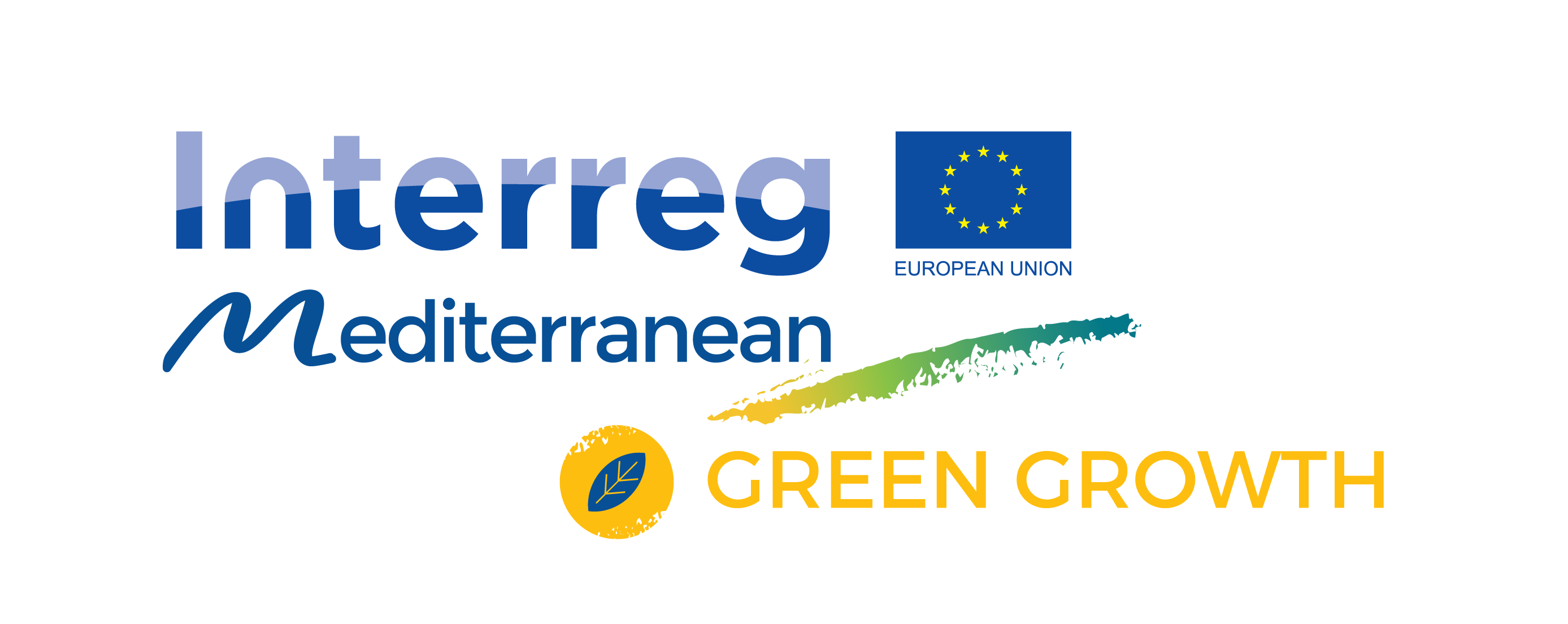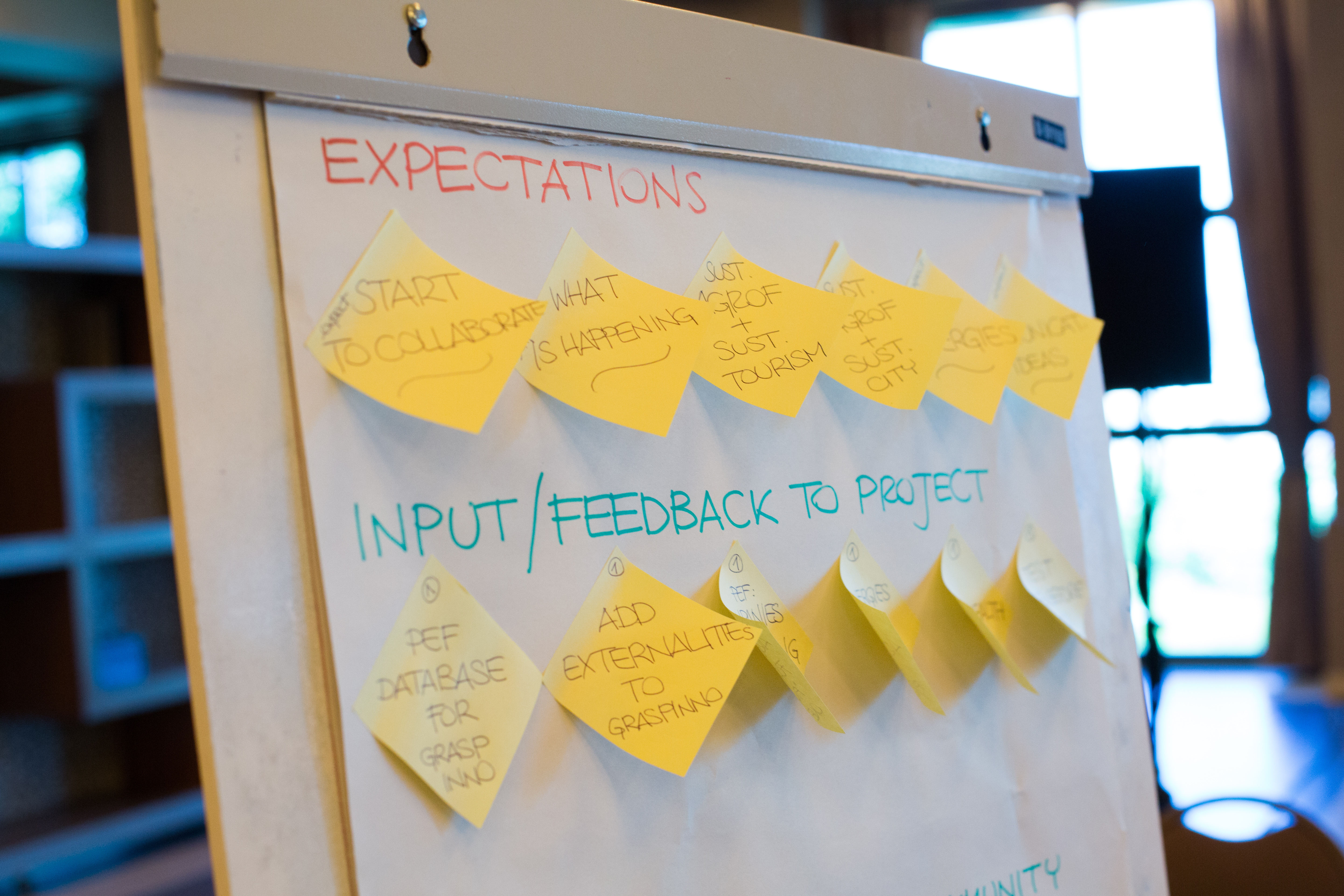Author: Marta Castillo Sánchez, Communications Officer at REVOLVE
The term eco-innovation is a relatively new expression. It recalls an old and ever-present idea in technological progress: innovation. Eco-innovation looks at innovative solutions for more resource efficiency But what does eco-innovation really mean? And what is the link between eco-innovation and a more circular economy, particularly in the Mediterranean region?
Eco-innovation can be defined as “innovation that results in a reduction of environmental impact, no matter whether or not that effect is intended”. That’s how ‘Eco-Innovation in Industry: Enabling Green Growth’ by the Organisation for Economic Cooperation and Development (OECD) defines the term. The European Commission’s ‘Eco-Innovation Action Plan (Eco-AP)’, on the other hand, describes it as “any form of innovation resulting in or aiming at significant and demonstrable progress towards the goal of sustainable development, through reducing impacts on the environment, enhancing resilience to environmental pressures, or achieving a more efficient and responsible use of natural resources”.
Given these definitions, a wide range of initiatives and programs are promoted as eco-innovation. All of them seem to have one thing in common: they point towards innovation being the key in enabling green growth.
Eco-innovation and circular economy, two sides of the same coin?
Following the European Commission’s understanding, eco-innovation contributes to achieving a more efficient and responsible use of natural resources, one of the main features of what is commonly understood as a ‘circular’ economy. The transformation from a linear to a more circular economic model is necessarily linked to complex and systemic challenges of production, consumption, jurisdiction and tax systems, but also the use of natural resources. v
While the original 2030 Agenda for Sustainable Development by the United Nations (UN) does not contain the term “raw materials,” the UN Sustainable Development Goals (SDG) Report 2020 did mention it as well as natural resources and the circular economy in the chapter dedicated to the update SDG 12. “Urgent action is needed to decrease our reliance on raw materials and increase recycling and “circular economy” approaches to reduce environmental pressure and impact”, affirmed the report. These statements made five years after the adoption of the SDGs illustrate the UN’s belief that resource efficiency needs to be increased and, more importantly, that consumption and production continue to be unsustainable.
However, putting an end to the linear economy is a challenge. But the innovation process to become more resource efficient and, therefore, swift towards a circular economy can lead to the creation of new green job opportunities and result in economic growth, as well as minimizing environmental impacts. According to the data shared by the European Parliamentary Research Service (EPRS) -the European Parliament’s in-house research service and think tank- a 20% drop in raw material consumption in the European Union since 2008 -partly due to the economic crisis- has already led to an increase in resource productivity of 2.4% per year since 2000.
The EPRS also highlights that a shift towards a more circular economy boosted by eco-innovation, where the use of secondary raw materials substitutes virgin raw materials in metal, glass and paper production, would also contribute to producing energy savings of up to 90% as well as significant water savings.
But where are the challenges?
The European Union set itself ambitious goals regarding the transition towards a circular economy, “we will live within the planet’s ecological limits and our prosperity and healthy environment stem from an innovative, circular economy where nothing is wasted and where natural resources are managed sustainably”. Despite the boost of the EU Green Deal as the policy framework to achieve this ambitious goal, the transition towards a circular economy in the European Union and around the world will encounter significant obstacles: from unrealistic market pricings to lack of information and awareness on alternatives models. As the European Environment Agency (EEA) states in its briefing ‘Growth without economic growth’, “the European Green Deal and other political initiatives for a sustainable future require not only technological change but also changes in consumption and social practices.”
However, “the current debate circles almost entirely around technological change and does not take into account the huge potential of societal and economic change”, affirms the study ‘A Societal Transformation Scenario for Staying Below 1.5°C’ of the Heinrich-Böll-Stiftung foundation and the Konzeptwerk Neue Ökonomie association. They highlight the fact that the social aspect should be put at the center to make effective the transition towards a more circular economy.
One of the barriers to abandon the linear economy paradigm pointed out by the European Academies’ Science Advisory Council (EASAC) in its commentary about Circular economy has the individuals at its core: the “gaps in the workforce and lack of circular economy programmes at all levels of education”. A barrier that is especially problematic for Small and Medium Enterprises (SMEs) as they have less access to resources and tools to close that gap.
Eco-innovation urgency in the Mediterranean
The Mediterranean region is warming 20% faster than the global average. It is a striking fact showcased in the ‘First scientific assessment report about climate and environmental change in the Mediterranean’ developed by 85 scientists from 20 countries of the Network of Mediterranean Experts on Climate and Environmental Change (MedECC). The assessment released in 2019 highlighted the fact as well that without additional mitigation measures, the regional temperature increase will be 2.2°C by 2040, yet the Paris Agreement target is 1.5°C. And these figures are only the tip of the iceberg. They are followed by an extensive list of problems related to food security, health, sea level rise, availability of water resources, and loss of ecosystems.
This alarming climate situation makes it even more urgent for the Mediterranean region to increase eco-innovation measures in order to mitigate the situation; to build on resilience mechanisms and to push the transition towards a circular economy. Currently besides Italy, France and Spain, Euro-Mediterranean countries are performing below the EU average in the eco-Innovation index.
This is where the work of Interreg MED Green Growth Community (GGC) is so important. The community works to improve this situation contributing to the development of new solutions to foster eco-innovation in the Euro-Mediterranean region. Through its four projects focused on this area (GREENOMED, GRASPINNO, finMED and CreaInnovation), the community is supporting businesses, and in particular SMEs, to innovate and apply more respectful production cycles.
SMEs at heart of innovation
In its recent white paper, the GGC highlighted the importance of SMEs in achieving real change in the European economy. That’s why in GGC projects are putting the focus on capacity building and creating an economic environment fostering clusters and cooperation networks. GREENOMED is one of the GGC projects focused on pushing eco-innovation. Its transnational cooperation methodology, developed based on experiences in Italy and Spain, was used to design and implement pilot plants for green manufacturing using smart specialization in different Euro-Mediterranean regions. The project’s methodology supported the establishment of regional stakeholder working groups and facilitated the creation of interregional connections between groups working on synergic projects to ensure its sustainability.
Again, access to finance is one of the main barriers for eco-innovative business, and in the case of SMEs this issue is emphasized even more. For this reason, GRASPINNO project has worked in this area, offering tools to public administrations (PAs) to facilitate electronic Green Public Procurement (eGPP) and supporting SMEs in submitting offers to GPP tenders. To be effective, GPP requires the inclusion of clear and verifiable environmental criteria for products and services in the public procurement process. In the area finMED has worked to develop a Capacity Building Tool to provide practical guidance to regional public authorities in the Mediterranean on what is needed to adopt new solutions and practices for innovation financing in SMEs. At the same time, finMED also developed a support service tool for clusters and business support organisation to provide assistance for SMEs access to finance.
Innovation has an implicit reference to creativity. Innovative ideas go hand in hand with creative approaches. CreaInnovation has developed and tested business innovation capabilities through the practice of creativity methodologies, tools and processes in creativity workshops with Mediterranean SMEs. As they explain, by adopting a “creative entrepreneurship approach to innovation, SMEs can cost-effectively tackle many of the challenges they face in growing their business”.
The need to abandon a linear economy is becoming more urgent every day. The climate emergency together with the economic crisis the region is experiencing makes an eco-innovative transition a priority for a more sustainable future for the Mediterranean.

